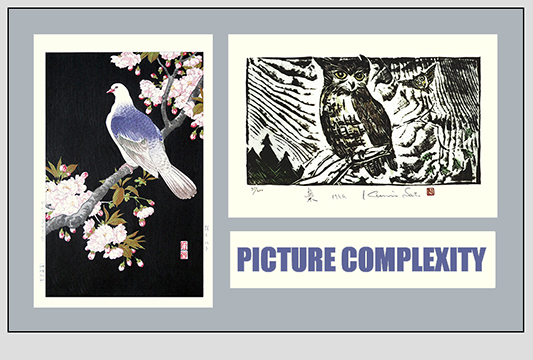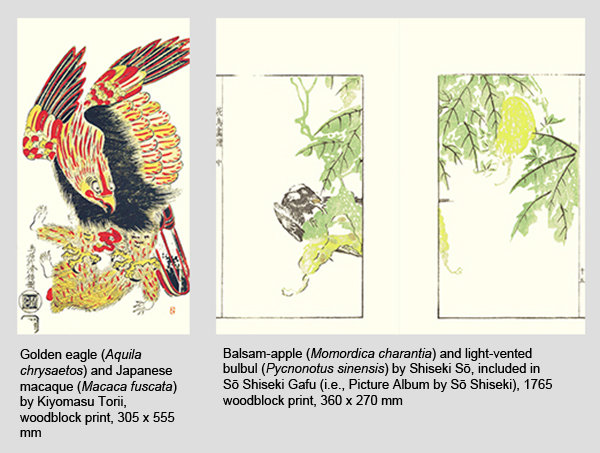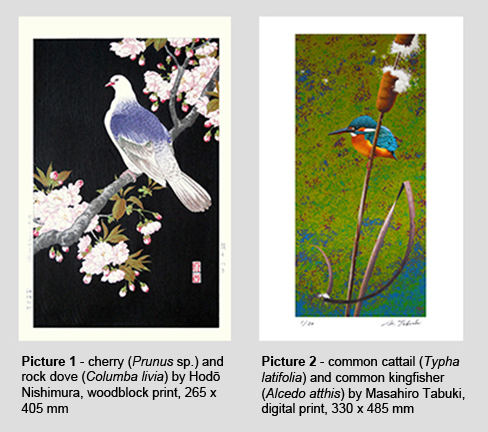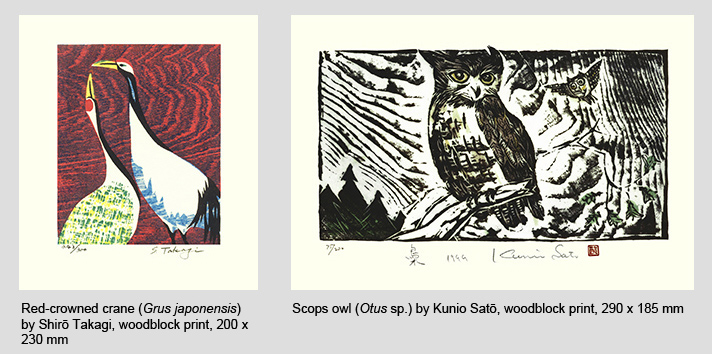Reader Collection > Blog > Picture Complexity |
||
 |
||
We live in a complex world full of living and non-living things. Artists have the option of reducing this complexity when they draw pictures. They may choose to do so for a number of reasons. First, less complex pictures are easier to draw. Second, the artist may be interested in some things more than others and decide to exclude less interesting things. For example, artists who choose to draw pictures of living things (i.e., plants and animals) may leave out the non-living things (i.e., earth, water, sky) that surround living things in the real world. In printed Japanese flower-and-bird art, artists left out sky and ground (i.e., earth, water) in 60% of their pictures. The first artists to do so typically left the background area surrounding flowers and (or) birds uncolored as shown in the two 18th century pictures below, chosen from the Reader Collection of Japanese Flower-and-Bird Art. |
||
 |
||
Later artists added one or more colors to the background. A dark background color helped to make light colored flowers and birds stand out (e.g., picture 1 below) while a mixture of colors could add interest to a picture (e.g. picture 2). |
||
 |
||
The background of Japanese printed art may also include a wood grain pattern, as shown in the two prints below. Most printed Japanese flower-and-bird art was made using a block of wood as the template for the printed picture and some artists allowed the wood's grain to remain visible in the background. |
||
 |
||
To see more prints with dark, mixed colors and wood grain backgrounds from the Reader Collection click here. |
||